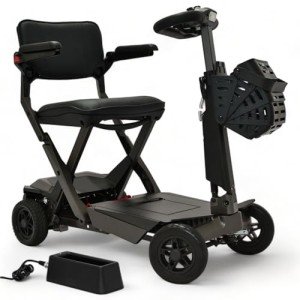Mobility Scooters: A Comprehensive Guide
Mobility scooters have become an essential mode of transport for lots of individuals dealing with mobility challenges. This post checks out the numerous aspects of mobility scooters, including their types, advantages, functions, and a guide for prospective buyers.
Comprehending Mobility Scooters
Mobility scooters are electrically powered gadgets designed for people with restricted mobility. They offer a method of transportation for people who may have difficulty strolling however still wish to maintain their self-reliance. They come in numerous styles and features to cater to a large range of needs.
Types of Mobility Scooters
Mobility scooters can generally be categorized into 3 primary types:
| Type | Description | Best For |
|---|---|---|
| Compact Scooters | These are small and lightweight, ideal for inside your home and short journeys. | Users with restricted storage space or those who travel frequently. |
| Mid-size Scooters | A balance between portability and stability, appropriate for both indoor and outdoor usage. | Those who require to cover a variety of surfaces. |
| Sturdy Scooters | Big and robust, created for rugged outdoor usage and heavier individuals. | Users requiring additional weight capability or going off-road. |
Secret Features of Mobility Scooters
The choice of mobility scooter typically depends on the functions that align with individual requirements. Here are some of the crucial features to consider:
- Weight Capacity: Mobility scooters include various weight limitations. It is crucial to choose a scooter that can properly support the user's weight.
- Range: The range a scooter can travel on a single charge differs. Depending upon user requirements, one might decide for scooters with a range of as much as 40 miles.
- Speed: Most mobility scooters can reach speeds between 4 to 8 mph. Consider what speed is comfortable and safe for the designated environment.
- Turning Radius: A compact turning radius is vital for indoor usage, enabling simpler navigation in tight areas.
- Battery Type: The type of batteries utilized can impact the scooter's performance. Lead-acid and lithium-ion batteries are the most typical.
Benefits of Using Mobility Scooters
The advantages of mobility scooters extend beyond just transportation. Some key benefits include:
- Independence: Users can browse their environment without depending on caregivers, promoting self-reliance and self-esteem.
- Health Benefits: Using a scooter can motivate outdoor activity, resulting in physical and mental health enhancements by decreasing sensations of seclusion.
- Convenience: Scooters can quickly be operated in various environments, whether indoors, in shopping center, or outdoors.
Crucial Considerations When Buying a Mobility Scooter
When purchasing a mobility scooter, several factors to consider can help guarantee that you choose the right design:
Assess Individual Needs:
- Mobility level: Consider how much help the individual will need.
- Series of use: Determine where the scooter will mainly be used (indoors, outdoors, on rough terrains, and so on).
Test Drive:
- Always test drive numerous designs to find an appropriate fit. Take note of convenience, ease of steering, and the scooter's responsiveness.
Evaluation Safety Features:
- Look for scooters with sufficient safety functions like lights, indications, and anti-tip styles.
Check Warranty and Service Options:
- A reputable warranty and readily available service choices are essential for long-term usage.
FAQs about Mobility Scooters
1. How quickly do mobility scooters go?Mobility scooters typically have speeds varying from 4 to 8 miles per hour, with a lot of developed for security instead of high-speed travel. 2. Are there weight constraints on mobility scooters?Yes, mobility
scooters feature specific weight limitations, frequently varying from
250 lbs to over 500 pounds, depending upon the design. 3. Can mobility scooters be used indoors?Certain models, especially compact scooters, are particularly created for
indoor usage and are much easier to maneuver in tight areas. 4. How often do the batteries need to be replaced?Battery life can differ based upon usage, however generally, with correct care, batteries may last between 1 to 3 years before needing replacement
. 5. Are mobility scooters covered by insurance? my website can differ, but some insurance strategies, including Medicare and Medicaid, might cover part of the expense. It's recommended to consult private insurance coverage suppliers. Mobility scooters function as a
valuable tool for lots of individuals, allowing them to preserve
their freedom and self-reliance. By understanding the different types and features of mobility scooters, individuals can make educated choices tailored to their particular requirements.
Whether used for errands, interacting socially, or leisurely activities, mobility scooters can enhance the lifestyle for those with mobility restrictions. Investing in a mobility scooter is a decision that can considerably impact a person's day-to-day life. Therefore, individuals need to carefully examine their alternatives and choose a model that best lines up with their lifestyle and mobility requirements
.

